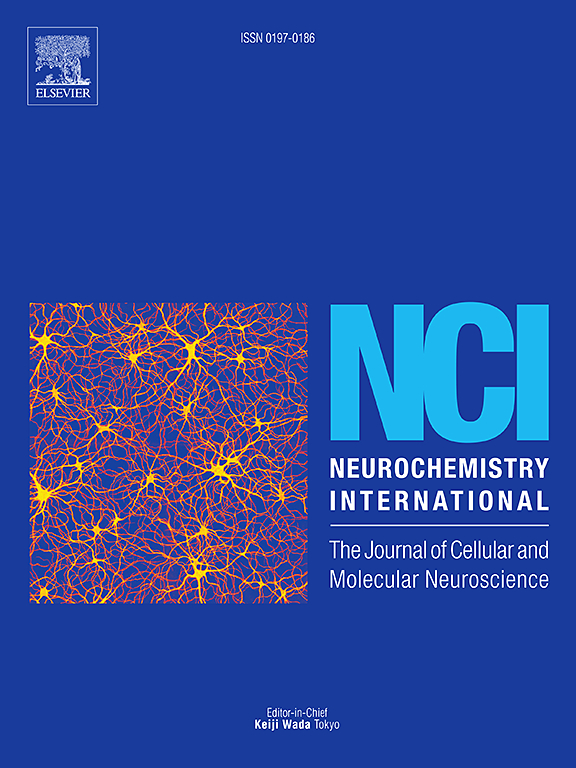Suppression of KDM5C mitigates the symptoms of Alzheimer's disease by up-regulating BDNF expression
IF 4
3区 医学
Q2 BIOCHEMISTRY & MOLECULAR BIOLOGY
引用次数: 0
Abstract
Histone methylation, a common form of chromatin remodeling, has been found to be associated with various neurological and cognitive disorders. However, little is known about how this mechanism contributes to the onset and progression of Alzheimer's disease (AD). Here, we found that lysine demethylase 5C (KDM5C), a histone H3 lysine 4 di- and tri-methyl (H3K4me2/3)-specific demethylase encoded by an X-linked mental retardation-related gene, displayed a progressive increase in the hippocampus with age in 3 × Tg-AD mice. Suppression of KDM5C partially mitigated the cognitive decline according to water maze, Y maze, and novel object recognition tests. In addition, significantly decreased amyloid plaques, enhanced long-term potentiation (LTP), and up-regulated expression of synaptic proteins were observed in KDM5C knockdown 3 × Tg-AD mice. Mechanistically, suppression of KDM5C could promote the expression of brain-derived neurotrophic factor (BDNF) to partially protect hippocampal neurons from beta-amyloid damage. In the promoter region of Bdnf, KDM5C was bound to the repressor element-1 (RE-1) motif to reduce the nearby H3K4me3 level and inhibit gene transcription. Mutations in the RE-1 motif reversed the inhibitory effect of KDM5C. Our results emphasize that KDM5C excess is one of the reasons for the onset and progression of AD and that suppression of KDM5C in the hippocampus should be considered a potential therapeutic target to ameliorate cognitive impairment and pathological symptoms in AD.

抑制KDM5C通过上调BDNF表达减轻阿尔茨海默病的症状。
组蛋白甲基化是染色质重塑的一种常见形式,已被发现与各种神经和认知障碍有关。然而,人们对这一机制如何促进阿尔茨海默病(AD)的发生和发展知之甚少。在这里,我们发现赖氨酸去甲基化酶5C (KDM5C)是一种由x连锁智力迟钝相关基因编码的组蛋白H3赖氨酸4二甲基和三甲基(H3K4me2/3)特异性去甲基化酶,在3×Tg-AD小鼠的海马中随着年龄的增长表现出进行性增加。在水迷宫、Y迷宫和新型物体识别实验中,抑制KDM5C可部分缓解认知能力下降。此外,在KDM5C敲除3×Tg-AD小鼠中,观察到淀粉样斑块显著减少,长期增强(LTP)增强,突触蛋白表达上调。从机制上讲,抑制KDM5C可促进脑源性神经营养因子(BDNF)的表达,部分保护海马神经元免受β -淀粉样蛋白损伤。在Bdnf的启动子区,KDM5C与RE-1基序结合,降低附近的H3K4me3水平,抑制基因转录。RE-1基序的突变逆转了KDM5C的抑制作用。我们的研究结果强调,KDM5C过量是AD发生和发展的原因之一,抑制海马中的KDM5C应被视为改善AD认知障碍和病理症状的潜在治疗靶点。
本文章由计算机程序翻译,如有差异,请以英文原文为准。
求助全文
约1分钟内获得全文
求助全文
来源期刊

Neurochemistry international
医学-神经科学
CiteScore
8.40
自引率
2.40%
发文量
128
审稿时长
37 days
期刊介绍:
Neurochemistry International is devoted to the rapid publication of outstanding original articles and timely reviews in neurochemistry. Manuscripts on a broad range of topics will be considered, including molecular and cellular neurochemistry, neuropharmacology and genetic aspects of CNS function, neuroimmunology, metabolism as well as the neurochemistry of neurological and psychiatric disorders of the CNS.
 求助内容:
求助内容: 应助结果提醒方式:
应助结果提醒方式:


